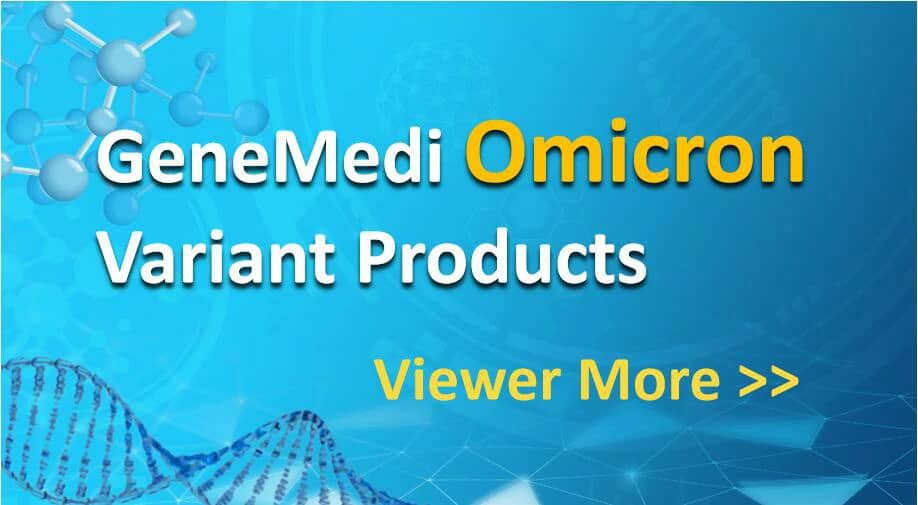No products in the cart.
Application of nanobodies (single domain antibodies)
Virus-like particles (VLP) Platforms for immunogens, vaccines and drug carriers
Antibody-drug Conjugate (ADC): Pre-made ADC benchmark, MOA, Production and QC
Neutralizing antibodies of virus (SARS2, HIV, HBV, Rabies, RSV, Ebola, Influenza)
Immunoglobulin Fc receptors for Fc&Fc Receptor binding assay
ILIBRA-HuEasy Monoclonal antibody (mab) humanization service (fully humanized ab)
Single domain antibody (Nanobody)
SOCAIL MEDIA

Nanobodies have been used for both diagnostic and therapeutic application due to its high stability, refoldability, and manipulable characteristics. In addition, VHH has been effectively used as a research tool.
In Vitro Diagnostic Tests
Nbs have been recommended for both in vitro as well as in vivo diagnostic tests. Early diagnosis of both infection and disease are important for the disease recovery. The various Nb-based in vitro diagnostic assay have been developed to identify the cancers and viral infectious diseases at early stages. Nbs have been used to screen possible contaminations such as toxins, pesticides, and herbicides in food or other consumer goods. Thus, Nbs have been used in ELISA to detect biomarker proteins, viruses, or other pathogens, and organic pesticides. Diagnostic sensitivity has been increased by capturing Nb bivalent or trivalent and by biotin tagging at its C-terminal end for directional immobilization on coated streptavidin and to improve the exposure of the antigen-capturing Nb into the solution. Further, Nbs have been expressed as fusions with alkaline phosphatase, horseradish peroxidase, or nanoluciferase to increase the sensitive. Competitive inhibition ELISA is used to detect the pesticides or toxin content in the food. In addition, Nb based lateral flow assay (LFA) is much more convenient for preliminary screening.
In Vivo Diagnostic Tests
Nbs are used as a tracer for noninvasive imaging. Nbs allow an efficient labeling with short-lived γ- or positron-emitting nuclides. Due to the small size, intravenously injected Nbs in tumor-bearing mice will rapidly extravasate and diffuse in tissues to trace the cognate antigens. Therefore, SPECT (single-photon emission computerized tomography) or PET/CT (positron emission tomography/computerized tomography) imaging can be obtained very soon after tracer administration. Nb directed against breast carcinoma HER2 antigen labeled with 68Ga was used to detect the primary breast carcinoma lesions or metastatic lesions. 99mTc-labeled Nb against vascular cell adhesion molecule-1 (VCAM-1) has been used as a biomarker for vulnerable atherosclerotic plaques. various Nbs were developed to monitor arthritis in mouse model.
Therapeutic application
The Nbs have broad therapeutic application. Nbs against amyloidogenic proteins prevent the formation of toxic protofibrils. Nbs against A-β potentially neutralize their toxic effect on neuronal cell lines. Nbs against β-microglobulin is probably more realistic. Multiple Nbs have been generated to neutralize various venoms and toxins. Viral infections have been treated more effectively with monoclonal antibodies (mAbs). To combat viral or bacterial infections in animals and humans, Nbs have been reconstituted with the human hinge and Fc region of IgG isotypes of the infected species to restore a HCAb. Instead, the pathogen-specific Nb can be conjugated to a second Nb that targets IgG or (human) serum albumin for passive vaccination. HCAb assemblies with multiple Nbs targeting various viral serotypes or multiple epitopes achieve the protection against virus. Nbs conjugated with Pseudomonas exotoxin A have been used to kill VEGFR2-expressing cancer cells. An antibody-dependent enzyme prodrug therapy (ADEPT) using anti–carcinoembryonic antigen Nbs seemed to be effective at eliminating solid cancers. Nb therapy could reduce toxicity in the healthy tissues.
Nanobodies As Research Tools
Nbs are easily captured on beads via their His tag or in vivo biotinylating on commercial streptavidin-coated surfaces and used to purify the recombinant antigenic protein with high specificity. Nbs are also used for the structural characterization of their cognate antigen. Proteins are sometimes difficult to crystallize. Hence, the Interaction between the Nb and its cognate antigen facilitates the crystallization for X-ray diffraction. Nbs are also used to study the protein dynamics using nuclear magnetic resonance. The genes encoding a Nb with a fluorescent protein are used to track the cognate antigen of the Nb within living cells. Fluorescently labeled Nbs have also been used in confocal microscopy. The presence of a membrane-attachment tag immobilizes the Nb on the cell surface and thus preventing antigen spread from this cell. Nb localization could be used to develop a real-time protein–protein interaction monitoring system inside the cellular compartment. Recently, Nbs have been engineered into photobodies or optobodies.
View the Knowledge base of Tandem VHH/ Nanobody(single domain antibody):
– Tandem VHH/Nanobody (single domain antibody): Structure, Production, Application and Products
– Tandem VHH/Nanobody (single domain antibody) – Introduction
– Structure and Physicochemical Features of Nanobody (single domain antibody)
– Nanobody (single domain antibody) production
– Application of nanobodies (single domain antibodies)
– Advantages and limitation of Nanobodies (single domain antibodies)
– GeneMedi’s products list of Nanobodies (single domain antibodies)




